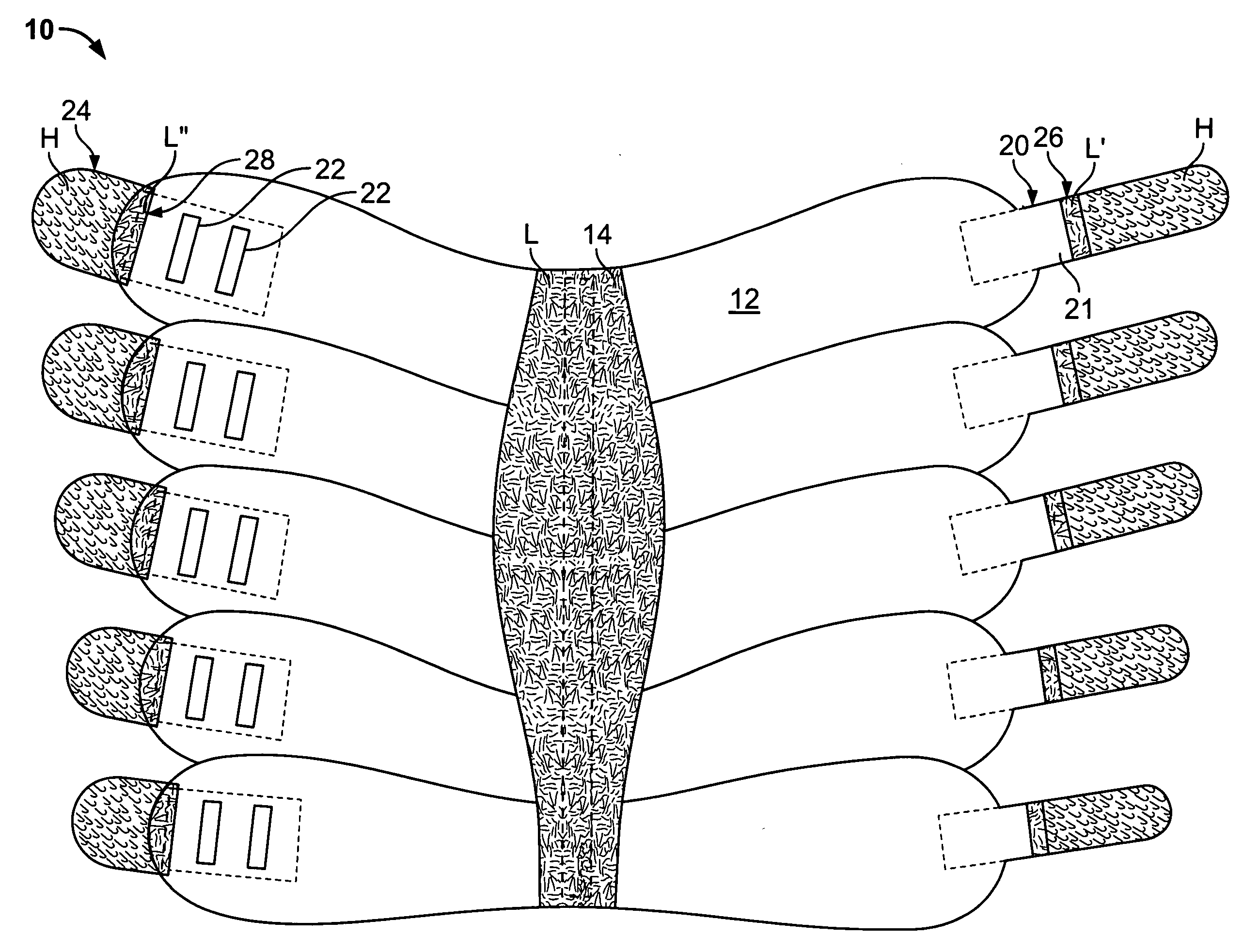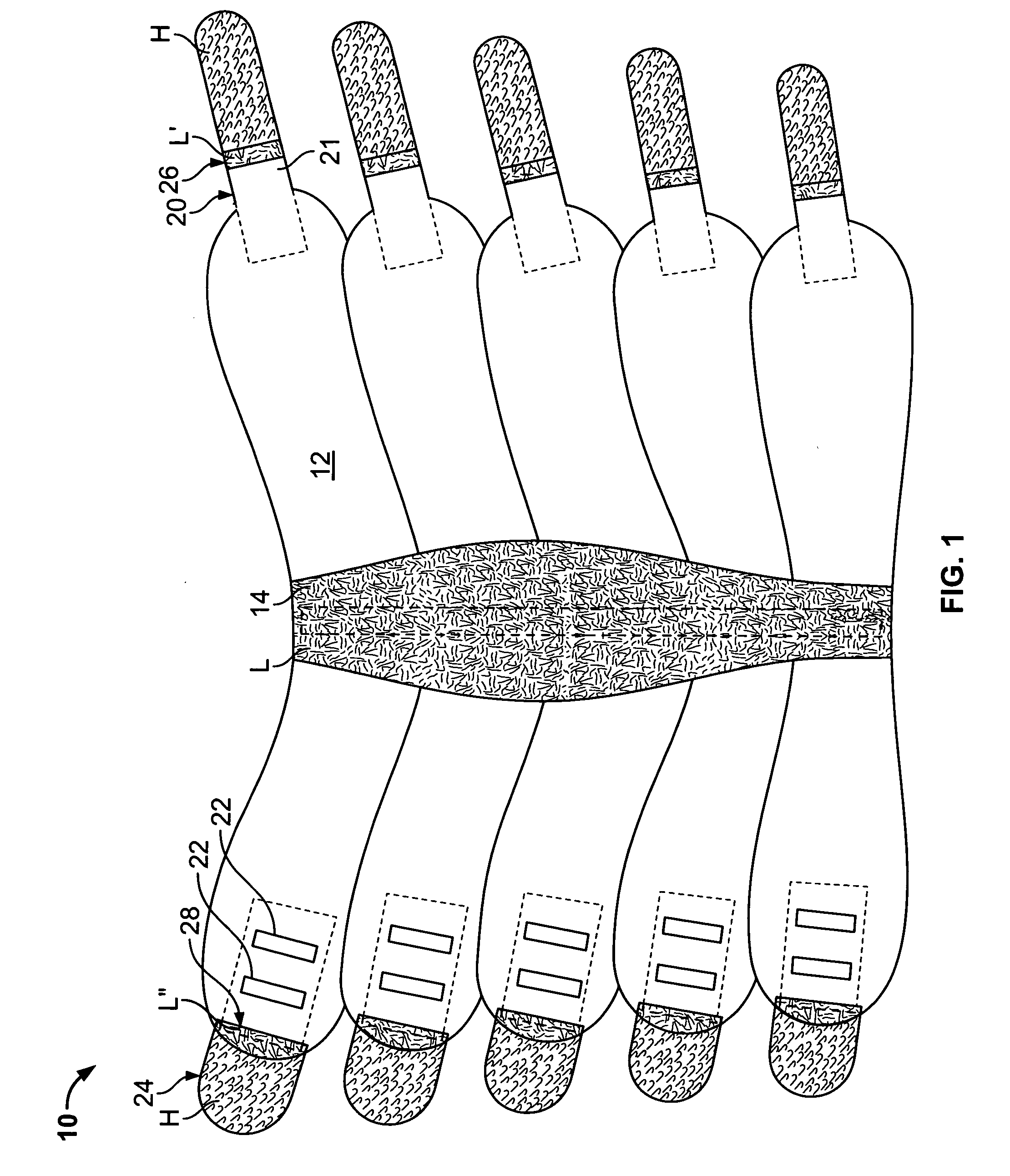Therapeutic device having auxiliary strap holding positions
a technology of therapeutic devices and holding positions, applied in the field of therapeutic devices, can solve the problems of severely restricting the mobility of patients with impaired mobility, severely restricting the ability to reach and manipulate the adjustment straps, and reducing the ability to receive proper treatment for those with impaired mobility, so as to reduce mobility or strength, restore the connective properties, and enhance the ease of using therapeutic devices with auxiliary strap holding positions
- Summary
- Abstract
- Description
- Claims
- Application Information
AI Technical Summary
Benefits of technology
Problems solved by technology
Method used
Image
Examples
first embodiment
[0058]In this first embodiment, a small complimentary loop portion L′ comprising an auxiliary strap holding position 26 is provided near the edge of each hook portion H opposite the distal end of each strap 20, 24. When straps 20, 24 are not being used to hold the compression band in a tightened position, the end of each strap may be folded over on itself with part of a hook portion H pressed into small loop portion L′ of auxiliary strap holding position 26, as shown in FIG. 2, to engage the auxiliary strap holding position. In this position, hook portion H is shielded such that strap 20 will not make firm engagement with any other loop portion L on any of bands 12, or on any other portion of device 10, or on the user's clothing, such as socks (not shown). Thus, strap 20 is prevented from tangling. In addition, with loop portion L′ comprising an auxiliary strap holding position 26 being smaller than hook portion H of strap 20, the force required to separate strap 20 from auxiliary h...
sixth embodiment
[0075]In a sixth embodiment, a therapeutic device 910 is shown in FIG. 12, with a therapeutic component 911 connected to a band 912. Band 912 preferably is made from a flexible, foldable Velcro-type fabric having an outer loop portion L which is preferably a light weight loop fabric that is elastic, but it may be inelastic, if desired. Band 912 has an outer surface loop portion L and is formed with a narrowed strap 920 at a first end, and a full width further strap 924 at a second end. Strap 920 has an inward facing hook portion H proximate its end and a small loop portion L′ adjacent hook portion H. Strap 924 includes a pair of slots 922 to accommodate strap 920 to pass through in threaded relationship. When strap 920 is threaded through a slot 922, the ends of straps 920, 924 are pulled away from each other to tighten the band. Once the band has been tightened, the band can be held in the tightened position to locate therapeutic device 910 on a body part requiring therapy, such as...
PUM
 Login to View More
Login to View More Abstract
Description
Claims
Application Information
 Login to View More
Login to View More - R&D
- Intellectual Property
- Life Sciences
- Materials
- Tech Scout
- Unparalleled Data Quality
- Higher Quality Content
- 60% Fewer Hallucinations
Browse by: Latest US Patents, China's latest patents, Technical Efficacy Thesaurus, Application Domain, Technology Topic, Popular Technical Reports.
© 2025 PatSnap. All rights reserved.Legal|Privacy policy|Modern Slavery Act Transparency Statement|Sitemap|About US| Contact US: help@patsnap.com



